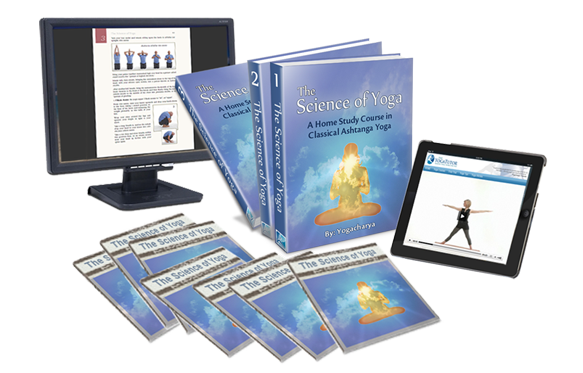[ Excerpt from The Science of Yoga, page 225 ]
The definitive minister for non-harmfulness and truth is the great soul (Mahatma) behind the Indian non-violent independence movement, Gandhi.
In his memorial lecture at the Mahatma Gandhi Institute in Mauritius, on October 6, 2005, Ambassador Pascal Alan Nazareth, Managing Trustee of the Sarvodaya International Trust relates the foundation of strength behind this, one of the 20th century's most powerful revolutionary leaders:
"The Jain Ahimsa tradition of his native Gujarat and his reading of Christ's Sermon on the Mount, Tolstoy's The Kingdom of God is Within You and Thoreau's Civil Disobedience convinced him that the most effective way to confront untruth, injustice and evil was through non-violent struggle.
Truth and non-violence thus became the two anchors of Gandhi's spiritual personality. His motto was: 'Truth is God and non violence the path for attaining Him'. It is his unshakeable and ever deepening faith in the power of truth and non-violence that made Gandhi the fearless, outstanding leader he turned out to be. By combining Truth (Satya) and Ahimsa (non-violence) he fashioned his strategy of 'satyagraha', which literally means 'to adhere to the Truth'."
The ingredients of Gandhi's leadership were the firm avoidance of harm coupled with unconditional love for all, including one's enemies, and unwavering truth.
Ahimsa to Mahatma Gandhi meant first cleansing one's mind of all hatred and enmity, and eliminating any desire for revenge. He understood that one must oppose the evil in man without opposing the man himself, and hence one needed to confront their evil without laying harm to them.
In this same way, truth must also only be used with altruistic intention, and never to harm. The wise sage Vyasa says:
"The truth will be used to the use of everybody and not for the harming of the creatures. Even if we say the truth, but through this we harm another being, we commit a big mistake."
In certain conditions, the truth can indeed carelessly be used and end up harming others. A well-placed remark about someone else's physical appearance, for instance, when it is certain that such a comment will invoke painful feelings in that person, is an inaccurate practice of satya and a deliberate infringement on ahimsa as well. Vyasa continues:
"Therefore, the yogi must first analyse what is good for all the beings, and only afterward speak, refraining from lies."
Thinking before speaking -- a quality which requires the highest awareness of truth and ultimate discernment -- is the right way of proceeding with both satya and ahimsa in mind.
In order to reach higher stages of evolution, we must learn to control our way of speaking -- knowing when we must speak and when we must not, and what is the proper thing to say, the right time to say it, and the proper way to say it...
[Continued...]
---------------------
NOTE: This yoga article is an excerpt from The Science of Yoga, an online yoga training program with streaming yoga videos and 600 pages of step-by-step yoga instruction.

"The Science of Yoga is a course worthy of
leather binding and an honored place in the
finest libraries in the world
... It is indeed a masterful work."
Dr. John Michael Christian
AwakeningWithYoga.com
Learn More About
The Science of Yoga Course
|






